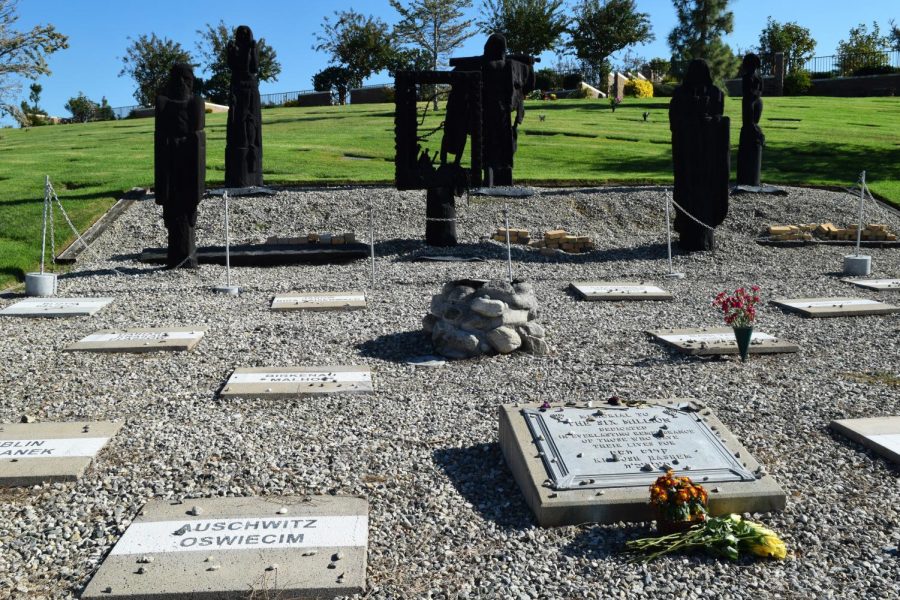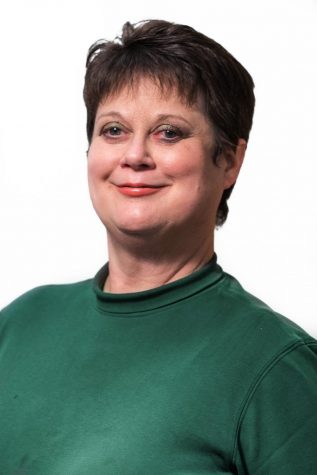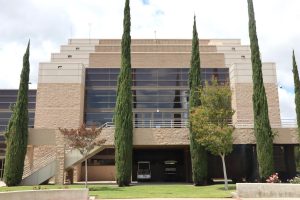Column: 80 years after the Holocaust, the embers of anti-Semitism still glow
“The Warsaw Ghetto Memorial/Memorial to the Six Million”, created by artist Bernard Zakheim, is located at the Mount Sinai Memorial Park in Hollywood. It portrays three dimensional figures rendered in burnt and tortured wood to depict differences among Holocaust victims. Six heroic figures are set among cement slabs bearing the names of the most infamous of the Nazi death camps. Rising from these stories is the flame that symbolizes the eternal spirit of the Six Million martyrs and the rebirth of Israel from the ashes of the Holocaust. Photo credit: John Louie Menorca
December 8, 2018
The terror began one night, on Nov. 9, 1938, when Nazi mobs torched and vandalized hundreds of synagogues throughout Germany and destroyed thousands of Jewish businesses, homes, hospitals, cemeteries, and schools. The rampage went on through the night and next day. Jews called it Kristallnacht or Night of Broken Glass, and nearly 100 Jews were killed.
Afterward, the purge of Germany of all Jews began and more than 30,000 Jewish men were arrested and sent to German concentration camps. Eventually women and children were arrested too and sent away. Although it was mostly Jews sent to the camps, others were sent too – anyone who was perceived as enemies of the Nazi State.
Today, there are many museums around the world that are intended to serve as memorials to the Holocaust, the Nazi Final Solution, and its millions of victims of the atrocities that occurred. Many feel it’s important for everyone to understand how and why this happened and what can be done today.
Daniel Reich, Curator and Director of Education at the Holocaust Museum & Learning Center in St. Louis, Mo., stated that everyone should learn from history and not repeat its mistakes.
“It’s important for everyone to learn about the Holocaust,” said Reich. “History is very compelling and continues to be relevant and resonates strongly today.”
However, many people all over the world deny that the Holocaust took place. It’s hard to imagine that people would be dragged from their homes in the middle of the night without warning and taken somewhere. Others have questioned why didn’t Jews leave? The German government made it very difficult for the Jews to leave based on a long list of documents they had to provide that were sometimes difficult to obtain. And who would have guessed that there would be death centers set up?
German-born Marlu Prouty (80) of Camarillo said that while she was growing up in Germany, her and her classmates were taught nothing about what was happening and why people disappeared.
“Our Catholic school nuns didn’t teach us anything except about the Grecian gods,” Prouty explained. “Even though members of my family served in the army, they denied its existence. Even today I’m still learning about what took place in the 1930s and 1940s.”
But perhaps it’s fair to say that the Nazis had Paul Joseph Goebbels, a German politician and Reich Minister of Propaganda, who controlled what information was dispersed to the public.
“People who deny the existence of the Holocaust,” said Reich, “usually have an agenda. Perhaps they’re anti-Semitic or anti-Israel. Even at Nuremberg [trials], its perpetrators never denied any wrong-doing. They claimed they were only following orders or didn’t understand that they were doing anything wrong.
“And there are a lot of grey areas,” continued Reich. “Some people think that yes, it went on, but there was a lot of exaggeration. This can come out of ignorance – to deny the activities of the Holocaust is to deny history.”
“My wish for people after they leave the Holocaust Museum & Learning Center,” said Reich, “is for them to have an understanding of history and the lessons and if these activities are left unchecked, it can happen again. People also need to be aware of what they’re reading and what’s going on around them.”
Jews weren’t the only ones who said the famous words “never again”, the world said the same thing in 1945. But, unfortunately, it has happened in places like Rwanda, Darfur, Rohingya, Cambodia, and Bosnia. However, it’s important to be aware of these atrocities and hold people accountable.
A memorial park, sometimes called a cemetery, in Hollywood, Calif., has an offering to the victims of the Holocaust. Artist Bernard Zakheim created “The Warsaw Ghetto Memorial, The Memorial to the Six Million”. It portrays six three-dimensional figures rendered in burnt and tortured wood to depict differences among Holocaust victims.
This monument is extremely powerful and it is not unusual to pass by individuals praying for loved ones or placing stones or flowers on the camps in memory of those who perished. There are stones representing death camps such as Buchenwald.
This weekend marks the seventy-seventh anniversary of the first death camp, named Kulmhof, in the village of Chelmno, located in Kolo County in Poland, which became operational on Dec. 8, 1941, according to Holocaust Education & Archive Research Team.
The entire Jewish population from the Warthegau, was to be exterminated there by means of poisonous gases. Warthegau, a territory incorporated into the Third Reich upon occupation of Poland in 1939, included both the Wielkopolska and the Lodz Provinces.
And now, here we are in 2018, two months after a mass shooting at the Tree of Life Synagogue in Pittsburgh, Penn. where 11 people lost their lives. The shooter, Robert Bowers, expressed his hatred toward Jews and had anti-Semitic statements posted online. He burst into this peaceful synagogue, mowing down innocent people. Jews all over the world live in fear of exactly this kind of event.
In his online rantings, Bowers blamed the Jews for the immigrants coming into the U.S. The scapegoating of Jews (or anyone else, for that matter) for society’s problems is a sad reminder that this is what Adolph Hitler used to convince Germans of the reason why they lost the first world war. Pres. Trump has used similar hateful rhetoric toward Hispanics whom he has blamed for crimes in this country.
Are we Americans destined to repeat history forever? Will we ever learn?







